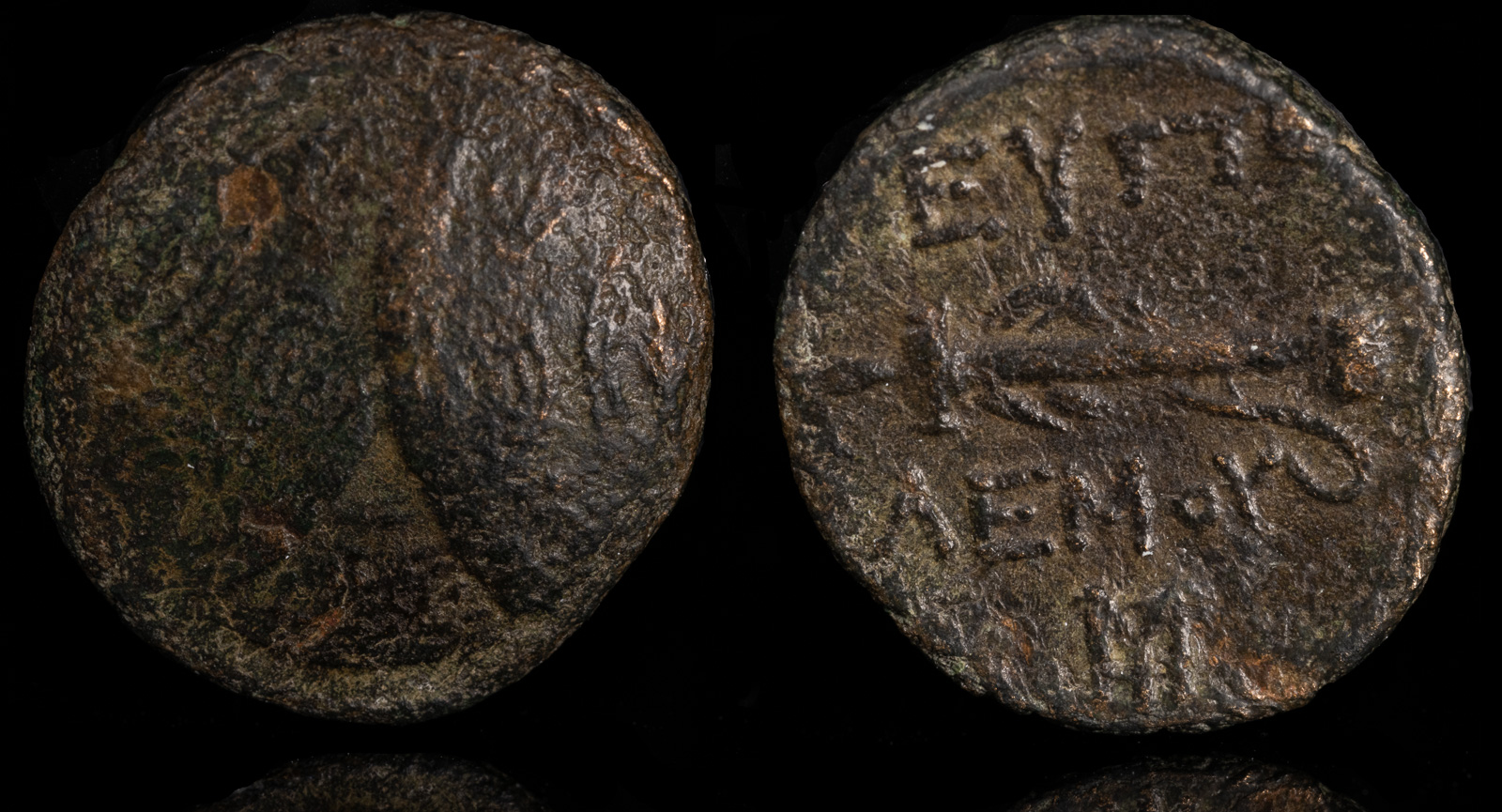
Eupolemos Caria, Mylasa
AE 3.11g 295-280 BCE
SNG Keckmann 223-224; SNG Cop. (Macedonia) 1168
Vs.: drei überlappende makedonische Schilde
Rs.: Schwert in Scheide, im Feld Monogramm
Mylasa was for some time the most important city in Caria. Although the origin of its name is debated, it may perhaps come from the Lycian word for themselves – Trmili. Miletos also may share this etymology.
Per Pausanias, the port was ten miles from the city. Strabo describes it as “situated in an exceedingly fertile plain, with a mountain forming a peak above it that has an excellent quarry of white stone.” He marveled at the number of temples built there, although he also marveled at the fact that it was built under an overhanging cliff. He records two sanctuaries to Zeus and lists a number of famous people who lived during his time and were from the city.
During the Hekatomnids under the satrap Mausalus, the capital was moved to nearby Halikarnassos, where one of the Seven Wonders of the Ancient World was eventually built – the Mausoleum of Halikarnassos. An earlier mausoleum, likely a smaller model for that one, can still be seen in the ruins.

Caria, Mylasa
circa 300-100 BCE
Æ 17 mm, 4,42 g
Obv: Horse right.
Rev: MYΛΑΣΕΩΝ. Ornate trident head.
SNG Keckman 225
Mausolos moves the capital of the Hekatomnid Satrapy from Mylasa to Halikarnassos.
Eupolemos is believed to have served as a general under Pleistarchos in Mylasa.
Estimated death of Pleistarchos. Eupolemos succeeds him at Mylasa.
Labienus takes Mylasa during the Roman Civil War, causing great damage.